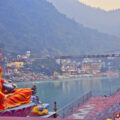Unexplored, untouched, and non-touristy!. These are adjectives often used to describe a journey through Kerala’s north.
While all that is true, there is plenty more this region offers. Adventures in this part of the country promise thrills that go beyond just unearthing a hidden gem or two!
The north of Kerala is a world of its own – geographically and culturally. Part of the former Malabar region, it is a seamless amalgamation of fascinating landscapes and traditions. Snugly positioned between the Western Ghats and the Arabian sea, this part of Kerala primarily invites seekers of the offbeat.
Owing to its location, you have access to beautiful beaches as well as crisp mountain air. Somewhere in the thicket of the forest, there is a natural cave, whereas the coast boasts of India’s only drive-in beach. It is the land of the Thalaserry biryani and the Theyyam, both of which complement the region’s geographic diversity beautifully!
So, here are 7 things to do in Kerala’s northern territory;
Marvel at the Malabar Coast from the Bekal Fort
Perched high up along the shores of the Arabian Sea, Bekal Fort is at least 300 years old and is the largest in Kerala. Built primarily for the military, it encloses only a handful of buildings and an ancient Anjaneya temple.
Located 16Kms from Kasargod, the fort comes into its own during the monsoons. The laterite edifice of the fort is punctured with strategically placed peepholes and exquisitely carved Theyyam figurines. The sea bastion built on the rocks, jutting out into the waters, further grants a marvelous view of the beach and the fort.
Indulge in the Thalaserry chicken biryani at Thalaserry
Getting to taste a dish in its hometown has its charm. Eating the Thalaserry Biryani in Thalaserry is a case in point.
A popular Mappila dish, it is dum cooked, which results in the flavors becoming more profound and the meat falling off the bones.
Unlike the basmati rice used in most Biryanis, Thalassery Biryani uses aromatic short-grained jeerakashala (khaima), a native to the region. A blend of garam masala with a hint of pepper enhances its flavors. The biryani accurately represents Mappila cuisine, a harmonious blend of traditional Kerala and Arab food culture.
Explore ancient carvings dating back to Neolithic times at Edakkal Caves
These natural rock shelters on Ambukutty Hills lie at an altitude of 1200m above sea level. Discovered over 100 years ago by a British Police officer named Fred Fawcett, it isn’t technically a cave but a fissure in the rocks that has come about owing to natural weathering.
However, what attracts archaeologists and most tourists are the numerous petroglyphs on the rocks that date back to about 6000BC. Although exhausting, the 45min trek rewards you with breath-taking views. These caves are a short drive from Sulthan Bathery, a major town in Wayanad.
Experience the thrill of driving on India’s only drive-in beach
While the name might be a bit of a tongue twister, Muzhuppilangad offers a smooth driving experience. With a stretch of about 5.5kms, it is also the longest drive-in beach in Asia.
A nominal entry fee gives you access to the entire stretch, though keep a lookout for oncoming cars and applicable speed restrictions.
Included among the six best drive-in beaches by BBC Auto in 2016, it is idyllic to visit the beach at sunrise or sunset. Located on the road connecting Kannur and Thalaseery, it also offers activities like parasailing, powerboating, and catamaran rides if driving is not your thing.
Witness the riveting visual extravaganza called Theyyam
A traditional ritual art form with its origins in the Malabar region, Theyyam, dates back 1500 years. The word Theyyam literally means God and is therefore often referred to as the Dance of Gods. The areas of Kannur and Bekal have several performances of the dance from October to February.
Theyyam has traditionally been a tribal ritual performed by men with elaborate costumes. The headgear in particular. Although nowadays, it is mostly seen in temples. Nevertheless, it is a feast for the eyes as it involves dance, drama, literature, music, and elaborate rituals usually performed at night.
Unraveling intriguing history in Kannur
Staying true to his trading history, Kannur today is a bustling seaside town. Remnants of his historic past lie scattered around, appealing to those looking for more than just a beach holiday. One of the most prominent and still in use monuments is the Kannur Lighthouse. Originally built in 1903, it offers undisturbed views of the beach-peppered coastline.
For a different perspective on Kerala’s history, head to the Arrakal Museum that houses a relatively well-maintained collection of memorabilia belonging to the Arrakal family, Kerala’s only Muslim Royal family. Fort St. Angelo (aka Kannur Fort) is a well-maintained colonial vestige built by the first Portuguese Viceroy of India, Dom Francisco de Almeida.
Visit the wild hills of Wayanad
Sitting perfectly at the southern tip of the Deccan Plateau, Wayanad is blessed with picturesque hills stations, umpteen trekking trails, large spice plantations, and abundant wildlife. A paradise for nature enthusiasts, travelers, get many opportunities here to birdwatch and go camping as well.
One is never too far from nature’s wonders in Wayanad, whether it is the magnificent Thusagiri waterfalls or the Wayanad Wildlife Sanctuary.
For birding enthusiasts, the Pakshipatalam Bird Sanctuary is a treasure trove for sightings. At the same time, numerous water bodies like the Karapuzha Dam and Pookode and Karlad Lake let visitors immerse themselves in the natural beauty of Wayanad.
Being less frequented by tourists means visitors can interact with locals and experience a destination in its truest sense. North Kerala still offers this option to the ones willing to take the road less traveled.
Photos: Author, Unsplash and Pixabay









